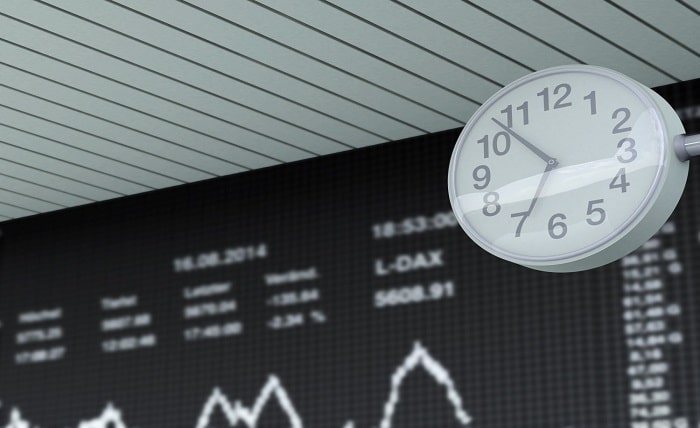Introduction
In the realm of finance, where every tick and tock of the market matters, understanding the concept of “aftermarket movers” is paramount. These movers, catalysts of market shifts after regular trading hours, wield significant influence over investment landscapes worldwide. From earnings reports to geopolitical events, various factors can trigger these movements, sending ripples across stocks, commodities, and currencies alike. In this comprehensive guide, we delve into the intricacies of aftermarket movers, exploring their nuances, implications, and strategies for investors to navigate them effectively.
Unveiling the Aftermarket Movers
The term “aftermarket movers” refers to significant price fluctuations in financial instruments that occur after regular trading hours. These movements, often fueled by breaking news, earnings reports, or unexpected events, can dramatically impact market sentiment and asset valuations. Understanding the nature and drivers of aftermarket movers is essential for investors seeking to anticipate and capitalize on market shifts effectively.
Key Drivers of Aftermarket Movers
Several factors can trigger aftermarket movers, ranging from macroeconomic indicators to company-specific news. Earnings surprises, regulatory announcements, geopolitical tensions, and technological advancements are just a few examples of catalysts that can propel significant price movements outside regular trading hours. By staying abreast of these key drivers, investors can better position themselves to capitalize on emerging opportunities and mitigate risks.
Impact on Investment Strategies
The impact of aftermarket movers on investment strategies cannot be overstated. For active traders, these movements present opportunities for short-term profits through quick market reactions and strategic trades. Conversely, long-term investors may view aftermarket movers as potential signals of underlying shifts in market fundamentals, prompting adjustments to portfolio allocations and risk management strategies.
Analyzing Aftermarket Movers’ Patterns
Analyzing patterns in aftermarket movers can provide valuable insights into market sentiment and investor behavior. By identifying recurring themes and correlations, analysts can develop predictive models to anticipate future movements and formulate more informed investment decisions. Technical analysis, sentiment indicators, and data mining techniques are commonly employed to discern patterns in aftermarket activity.
Strategies for Navigating Aftermarket Movers
Navigating aftermarket movers requires a combination of vigilance, adaptability, and strategic acumen. Investors can employ various strategies to capitalize on opportunities and mitigate risks, including pre-market research, limit orders, stop-loss orders, and options hedging. Additionally, maintaining a diversified portfolio can help cushion against adverse movements and enhance overall resilience.
Risks and Challenges Associated with Aftermarket Movers
While aftermarket movers present opportunities for profit, they also entail inherent risks and challenges. Thin liquidity, heightened volatility, and limited access to information outside regular trading hours can amplify the potential for abrupt price swings and adverse outcomes. Moreover, misinterpretation of news or market sentiment can lead to impulsive decision-making and suboptimal investment outcomes.
Regulatory Considerations and Aftermarket Movers
Regulatory frameworks play a crucial role in shaping aftermarket dynamics and investor behavior. Securities regulators impose restrictions on insider trading, market manipulation, and disclosure requirements to promote fair and orderly markets. Additionally, exchange rules governing extended trading hours and after-hours trading platforms influence the accessibility and transparency of aftermarket activity.
Technology’s Impact on Aftermarket Movers
Advancements in technology have revolutionized aftermarket trading, enabling greater accessibility, efficiency, and automation. Electronic trading platforms, algorithmic trading algorithms, and real-time data analytics empower investors to execute trades swiftly and capitalize on fleeting opportunities. However, technological innovation also introduces new complexities and risks, such as algorithmic glitches and cyber threats.
Psychological Factors in Aftermarket Movers
Psychological factors play a significant role in shaping aftermarket dynamics and investor decision-making. Fear, greed, herd mentality, and cognitive biases can amplify market volatility and exacerbate price movements outside regular trading hours. Understanding the psychological underpinnings of market behavior can help investors navigate aftermarket movers with greater clarity and composure.
Future Trends and Outlook for Aftermarket Movers
Looking ahead, aftermarket movers are likely to continue evolving in response to shifting market dynamics, technological innovation, and regulatory reforms. As globalization, digitization, and geopolitical tensions reshape the financial landscape, investors must remain vigilant and adaptable to navigate the ever-changing terrain of aftermarket trading successfully.
Conclusion
Aftermarket movers represent a dynamic and influential force in the world of finance, shaping market sentiment, investment strategies, and risk profiles. By understanding the drivers, patterns, and implications of aftermarket activity, investors can enhance their ability to capitalize on opportunities and mitigate potential pitfalls. However, navigating aftermarket movers requires a disciplined approach, informed by rigorous research, prudent risk management, and a keen awareness of market psychology. As markets continue to evolve and adapt, staying ahead of the curve in aftermarket trading will remain a crucial skill for investors seeking to thrive in an increasingly complex and competitive landscape.
Read more about: spydialer
FAQs:
1. What are aftermarket movers, and why do they matter?
Aftermarket movers refer to significant price fluctuations in financial instruments outside regular trading hours. They matter because they can influence market sentiment, investment strategies, and asset valuations, presenting both opportunities and risks for investors.
2. How can investors capitalize on aftermarket movers?
Investors can capitalize on aftermarket movers by staying informed, employing strategic trading techniques, and maintaining a diversified portfolio. Strategies such as pre-market research, limit orders, and options hedging can help mitigate risks and maximize returns.
3. What are the risks associated with aftermarket movers?
Risks associated with aftermarket movers include thin liquidity, heightened volatility, regulatory constraints, and psychological biases. Misinterpretation of news or market sentiment can also lead to impulsive decision-making and adverse outcomes.
4. How do technological advancements impact aftermarket trading?
Technological advancements have revolutionized aftermarket trading, enabling greater accessibility, efficiency, and automation. Electronic trading platforms, algorithmic trading algorithms, and real-time data analytics empower investors to execute trades swiftly and capitalize on fleeting opportunities.
5. What role do regulatory frameworks play in aftermarket dynamics?
Regulatory frameworks play a crucial role in shaping aftermarket dynamics by imposing restrictions on insider trading, market manipulation, and disclosure requirements. Exchange rules governing extended trading hours and after-hours trading platforms also influence accessibility and transparency.






